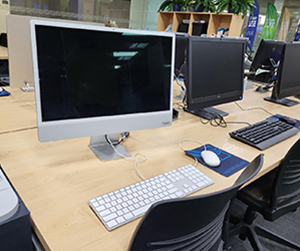Enable students to make healthy meal choices
October 28, 2014
The rumbling in my stomach causes me to pause, and I look up from my keyboard to the clock on the wall – 1:45 p.m. I have been working on this math assignment for the past hour, and it’s definitely time for a lunchbreak. Gathering my things from the library chair where I’d been parked for the morning, I consider my food options. I follow a vegan/gluten free diet for health reasons, and my soy/nut allergy complicates things further. Truax offers meals through several vendors on campus, so I should be able to find something healthy and palatable, right?
I reach the cafeteria in time to watch the sliding metal gate close across the Whole Bowl. The Whole Bowl opened at Truax in 2012, and began offering fresh made meals featuring local meats and organic vegetables. Selections include falafel, grilled salmon, and miso soup. Students play with a variety of ingredient choices, and create a bowl to their tastes. This is a welcomed addition to the food options, but it’s only open for two hours a day, 11:30 a.m. to 1:30 p.m., Monday through Friday. I have missed the boat, and my first choice at a plant based lunch.
I take a quick tour of the Marketplace cafe. People line up for panini’s and pasta, but I’m not interested in spiking my blood sugar with simple carbs. The main entree of the day follows the typical pattern of cooked animal plus cooked green vegetable plus cooked white vegetable. The veggie burger from the grill costs nearly $3, for a wheat bun and patty with suspicious ingredients. Two steaming cauldrons in the corner offer hope; soup is an old vegetarian standby. Today’s options: beef chili and jerk-chicken tomato. The salad bar is my last resort, but there’s one more option on campus for a possible hot meal.
The WolfPack Den menu nearly sparkles from the greasy food it offers- but at least it’s open- for another 15 minutes until 2 p.m. Pizza, chicken tenders, and French fries solve the students salty snack craving. Most of the items are fairly inexpensive, with the cheapest meal option being a walking taco. For a $1.50, you get a small bag of chips also filled with cheese, meat, beans, and salsa. Deals like this are nearly irresistible to the hungry, broke college student.
But my commitment to a functional GI tract, pushes me away from the heat lamps, down toward the build-your-own burrito/taco bowl. The nachos nearly tempt me to purchase, but then I remember that the chips most likely contain genetically modified corn. Waiting for dinner becomes the new plan, and I resolve to pack a lunch tomorrow.
Some students are satisfied with plain cheese pizza.
“I’m good with what they got now,” said Amber Googins, a liberal arts transfer student.
But as more information becomes available, people are looking more closely at their dietary choices. Opting out of gluten, GMOs, and animal products is becoming more and more popular. According to research from NPD Marketing, 30 percent of American adults were trying to avoid or cut down gluten in their diets in 2013. Popular books, like Wheat Belly by Milwaukee Dr. William Davis, seek to educate the public on the dangers of eating whole grains, wheat, and gluten. Netflix showcases hundreds of documentaries, including ones covering food science, public health, and agricultural business. Food Inc., Forks Over Knives, and Fat, Sick, and Nearly Dead are documentary films aimed at educating people on one of the most essential things we do each day: eating!
People want better options for better health. The Madison College culinary crew could do a few things to help student make better choices for themselves. My humble suggestions are as follows:
• Post ingredient lists for entrees, soups, deli salads, and every other possible option. Knowing what exactly you are eating is the first step to an informed choice. This will be more difficult for some items than others, and the first step could simply be labeling the salad bar options.
• Offer a vegan, gluten-free soup every day. Soup is easy, simple, and very inexpensive, especially if meat and diary are left out. The overhead cost to make vegetable-lentil soup at home is pocket-change per serving; it would be even more economical in a commercial kitchen setting.
• Expand dining hours. The Whole Bowl could be open until at least 3 p.m. The Wolfpack Den and the Gateway Café too. The college put millions of dollars into renovating this beautiful campus; part of an enjoyable college experience is being able to get a snack on a study break.
• Offer a vegetarian option with the entrée selection. If today is green curry day, the kitchen could make one pan with chickpeas instead of chicken.
Having more information and more options are essential steps to a bright student body. We are what we eat and I want to know what I am when eating at Truax.










